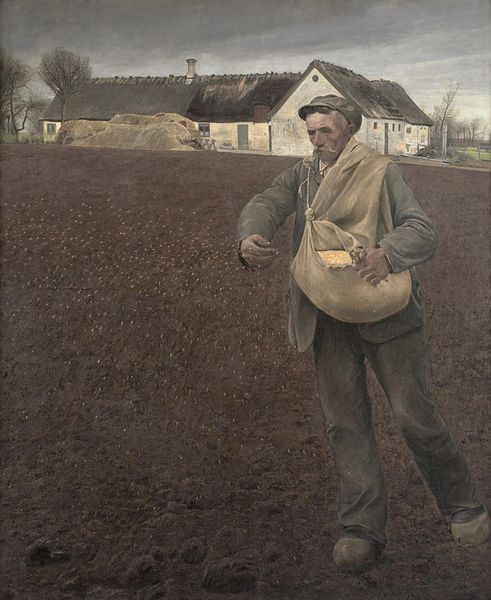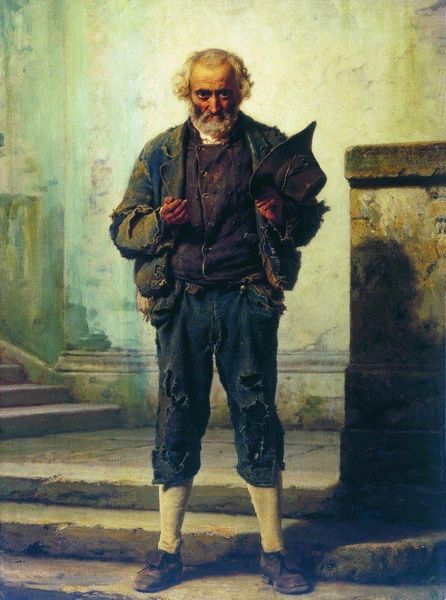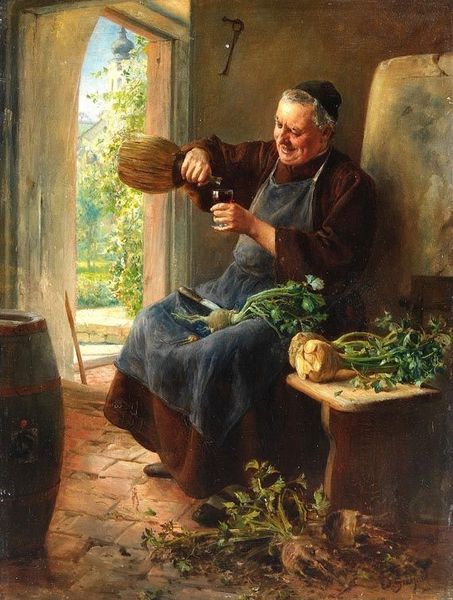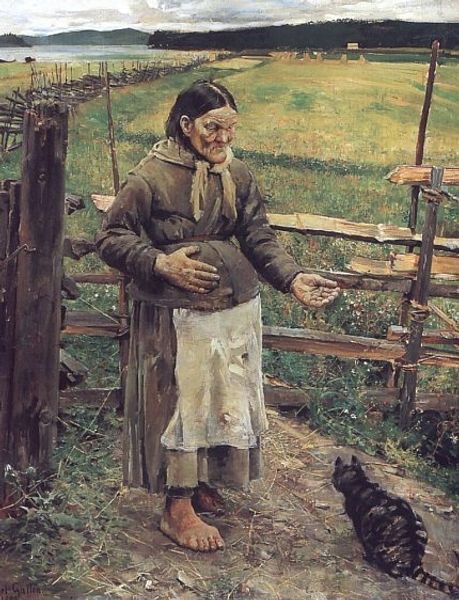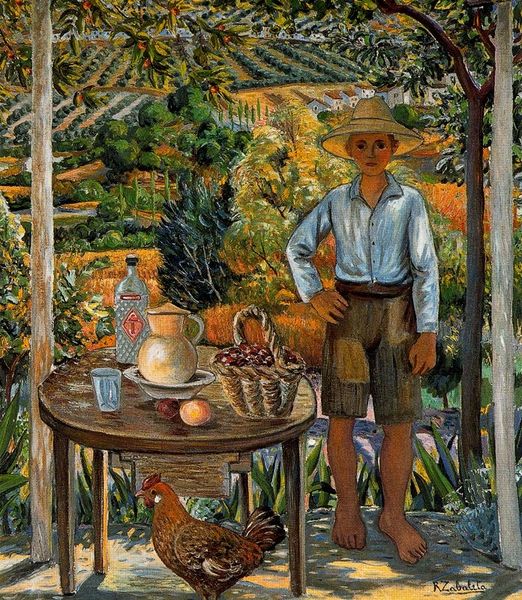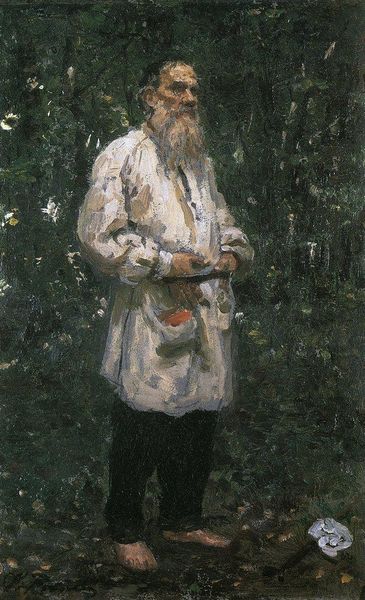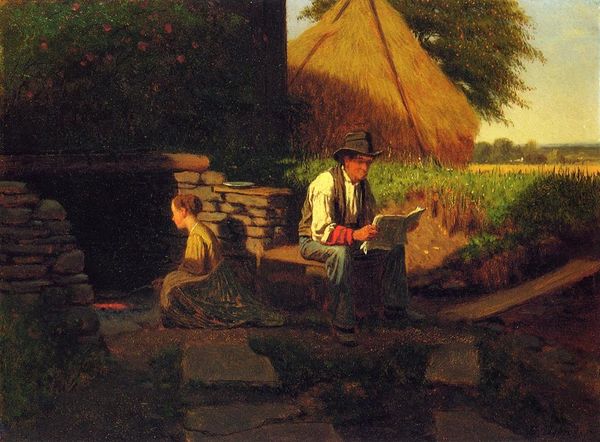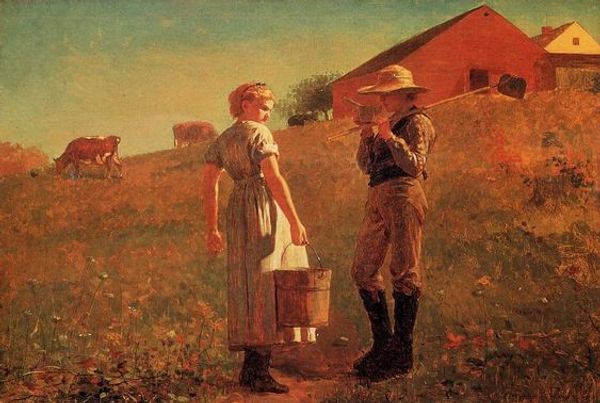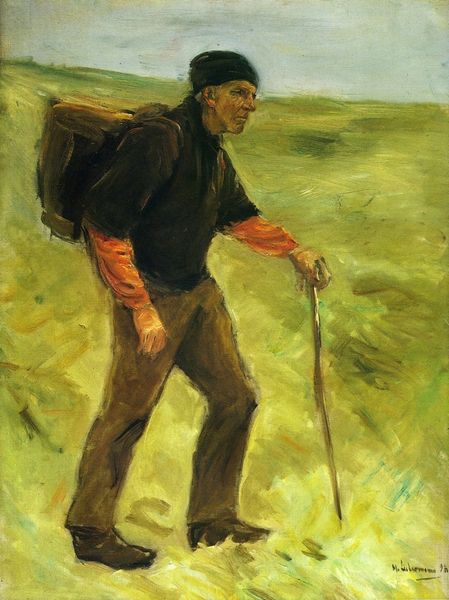
plein-air, oil-paint
#
portrait
#
dutch-golden-age
#
impressionism
#
plein-air
#
oil-paint
#
landscape
#
oil painting
#
realism
Dimensions: 216 x 140 cm
Copyright: Public domain
Editor: Emile Claus’s "The Old Gardener," painted in 1885. It looks to me like he has caught the gardener stepping outside and blinking at the sunlight; he almost looks surprised. What do you notice when you look at it? Curator: Notice first the way the light is handled. It doesn’t fall uniformly across the subject but instead creates distinct areas of illumination and shadow. See how this contrast defines the form of the gardener, drawing our eye to particular textures. Claus clearly experimented with plein-air painting, observing shifts of natural light. Editor: Yes, I see it. The light almost obscures one half of him, while the other shines. Are you drawn to any particular elements? Curator: The materiality of the paint itself is compelling. Observe the application of the pigment; thick impasto in some areas, particularly the foliage, creates a palpable sense of volume, contrasting with the smoother treatment of the figure’s face and clothes. Editor: So, even though the subject is simple, a man and his garden, it's all about the execution. What does that choice mean in this context? Curator: Precisely. The structure, the composition…it is far from simple. Focus on how Claus’s formal choices heighten our attention to the visual experience. We are not looking at a man; we are perceiving light, color, form, expertly arranged on canvas. Editor: I understand, the way it’s made is just as important as what is depicted. Curator: Indeed. Considering this formal lens provides insight into how visual components function together to produce an effect that moves beyond literal representation. Editor: It gives you a new way to look at things for sure. Thanks for opening my eyes to that.
Comments
No comments
Be the first to comment and join the conversation on the ultimate creative platform.
